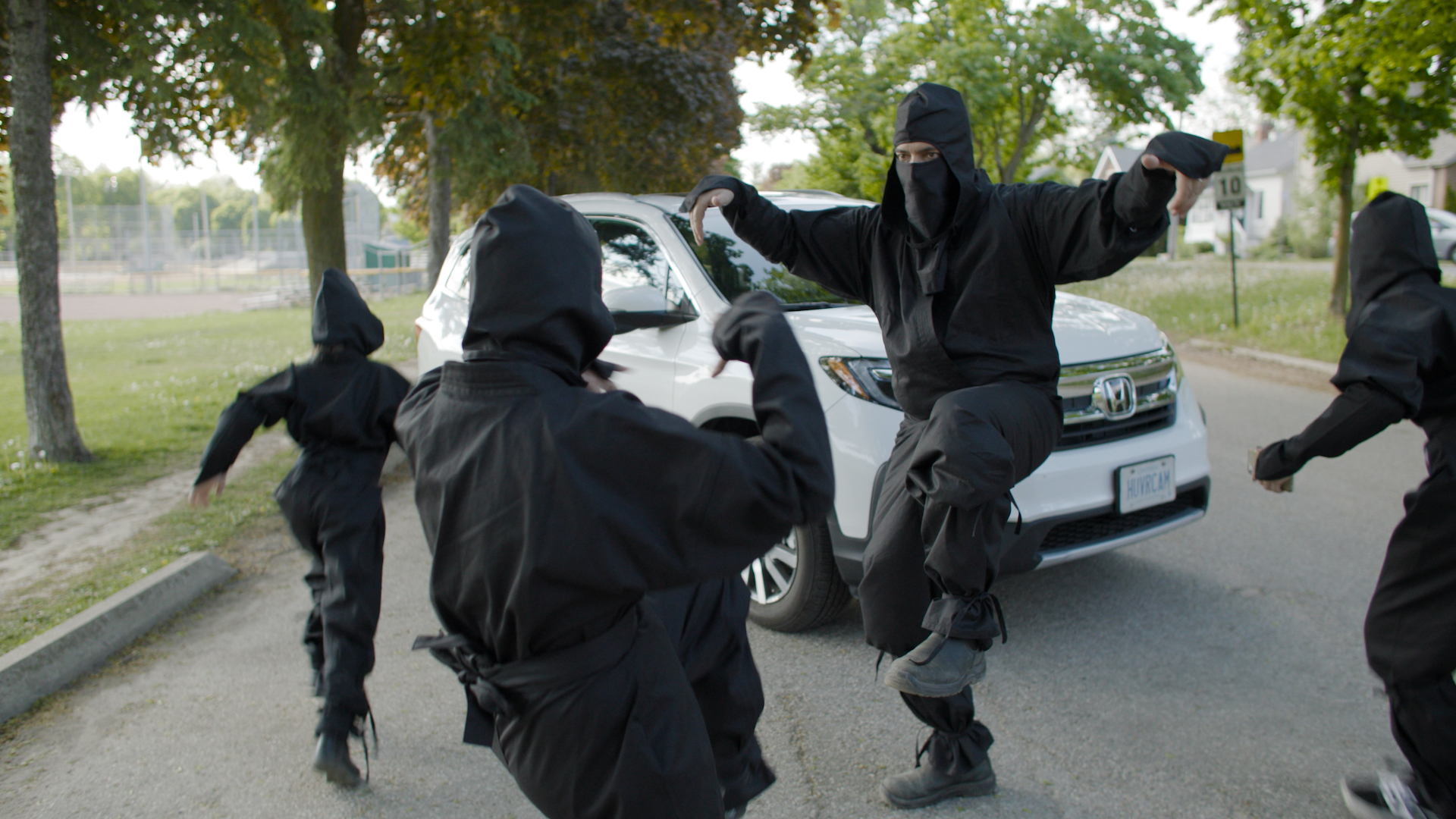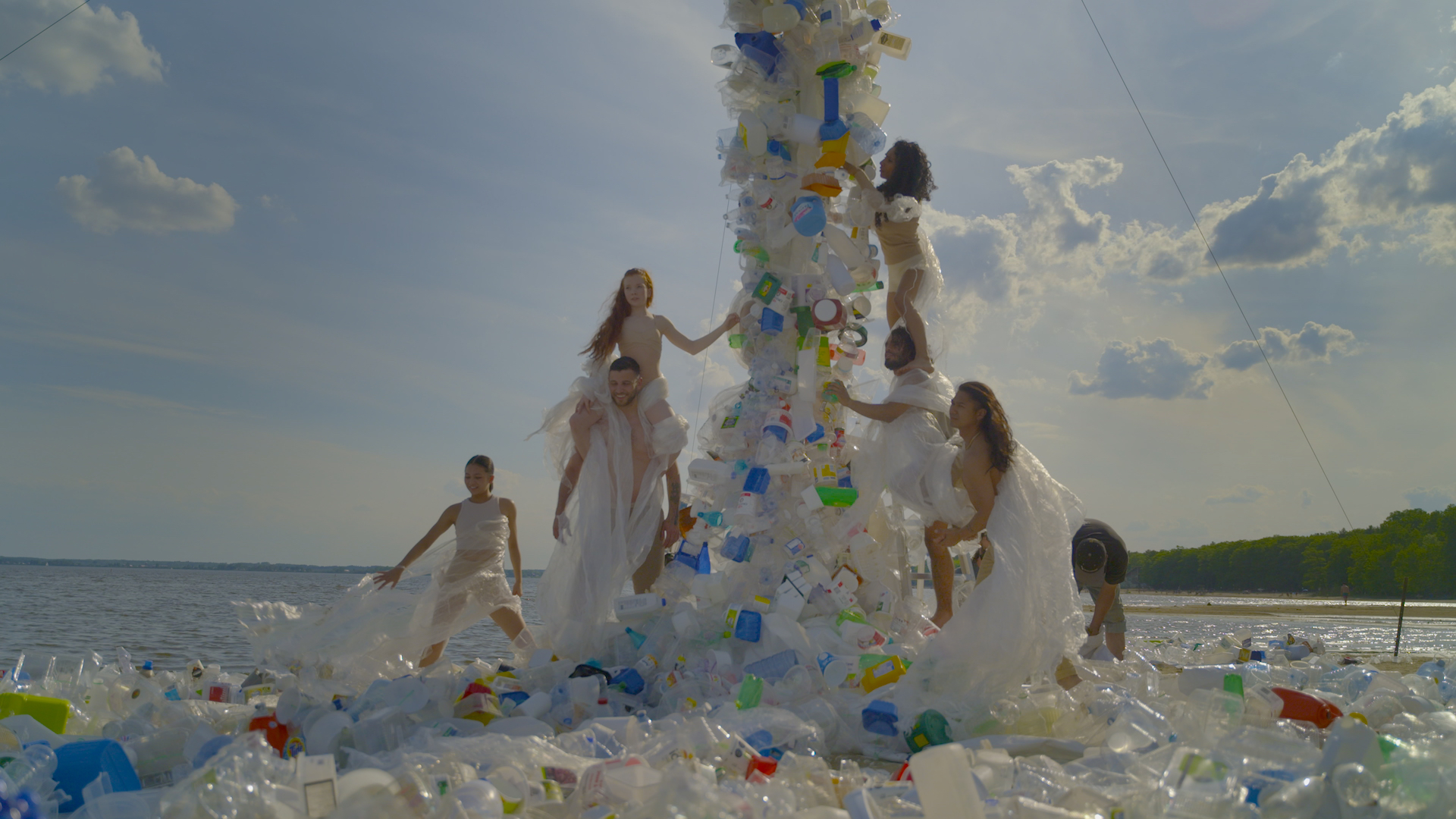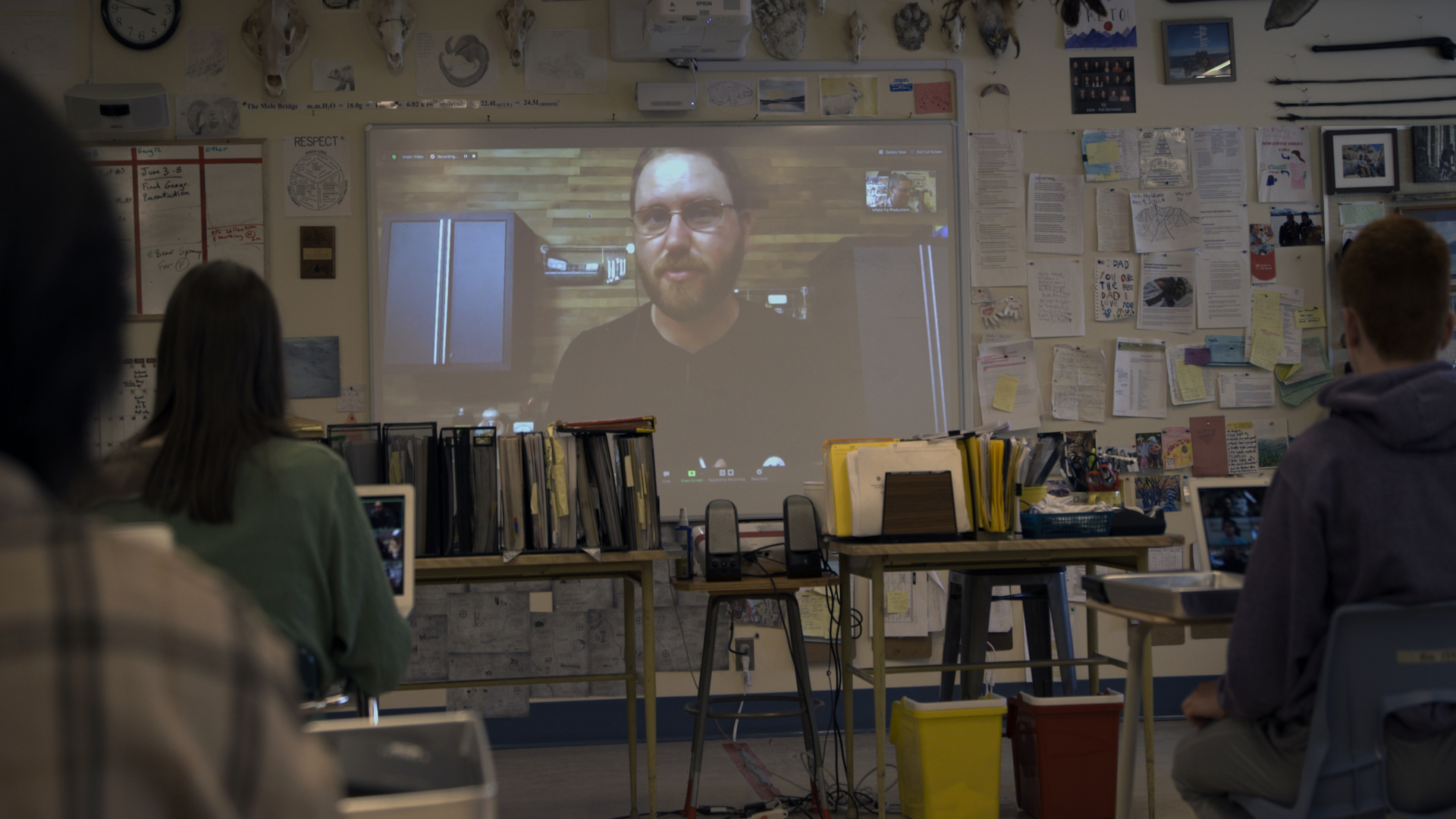Lots of people know about the documentary series on CBC called The Nature of Things, as I’ve covered content from that a couple of times this year. It’s one series that’s sure to keep going and going as it not only educates people on the environment, but tells us some cool facts as well. One of the latest docs in this series coming up is Curb Your Carbon, a rather fun and interesting documentary narrated by Ryan Reynolds as the doc goes around the world showing all kinds of people saving the Earth and reducing CO2 in their own interesting methods. It’ll be a while before it comes out, so in the meantime I present to you this interview to pique your interest. Last week I spoke with Dugald Maudsley, the mastermind behind this incredible traveling doc. He’s a man who’s been making documentaries and telling stories on climate change for 30 years, with no sign of stopping. This is probably one of his best docs yet, so get ready to eco-scroll through this read and learn what I learned, about the Earth!
HNMAG: Curb Your Carbon sounds pretty exciting to include humour, stunts, and even animation. Why did you include so much in what sounds like a simple sounding doc?
Dugald: I think what we realized was it just gets super depressing after a while tackling the subject over and over again. We realized there were things that individuals could do, instead of feeling helpless and disempowered, things we could each do that are pretty easy. If we multiplied them millions of times, we could actually cut billions of tons of carbon dioxide. We then decided to push the empowering story even further. We did that by making it fun and illustrative.
HNMAG: Have you done other subjects besides climate change?
Dugald: My team and I have done all sorts of things. We just finished a film where we embedded 10 different film crews around the world in places with different vaccine research teams, including the team BioNTech, the team who won the race and we spent over a year chronicling the race to create a vaccine and it went to air on The Nature of Things, in December. We’ve done lots of science docs over the years for The Nature of Things. We had a series called Myth of Science where we’d look at food, health, sleep, and try to figure out what’s true and what’s not when it comes to things you hear. We’ve done films about historical football and hockey teams, the first Canadian hockey team to win a gold medal at the Olympics. We’ve done a range of things over the years.
HNMAG: WIth all the facts about carbon, where did you come up with all these ways of showcasing them?
Dugald: First of all we had a fantastic team and our researcher/co-producer Monika Delmos who I have worked with for years. I really started to dig out what was out there. Plus we had an interesting mandate. Our broadcaster Sue Dando said she wanted a story that was fun and at the same time give information and build it around stunts. A great example of that is our story on eating less meat where we realized about 7 billion tons of carbon dioxide are created every year in the livestock industry. If we just got to the point where each of us had less meat meal a week, and spread that across the population around the world, we’d cut 1.5 billion tons of carbon dioxide which turns out to be the number of cows in the world.
Dugald explained the best way to do that was getting a rugby team in New Zealand, which is notorious for having almost everyone there eat meat. The team was divided into two halves, one fed a meal of steak, and the other was served tofu. Each team then had to push their equivalent of CO2 across the field in a race. It didn’t only explain healthier benefits, but show a stunt.
HNMAG: Were there any other facts about carbon and the environment you wanted to include but couldn’t due to time constraints?
Dugald: One of the big stories that we looked at was the amount of clothing that we waste. For me that was an eye opener, I had no idea that we waste so much clothing and we live in a world where fast fashion is becoming a big deal. Cheap clothes that you wear for a while and throw them out. Those end up in landfill sites and they don’t go away. Carbon was created to make those clothes, and we started looking at some of the statistics in New York City. New Yorkers throw tons of clothes away every day. We produce enough garments worldwide that we can run a clothesline from the Earth to the moon and back 97 times. That was a real stunner for me, but we just didn’t have the time.
HNMAG: Why did you choose Ryan Reynolds to narrate?
Dugald: Well, we realized as we were going along we had the really empowering story about things that individuals can do, it actually turned out that COP-26 had happened and there wasn’t much action that made individuals think made a lot of sense. We looked out there and thought who might be able to narrate this? We were looking for people who had really strong and good environmental credentials. Ryan Reynolds is perfect that way, he works for partnerships for American Forests, Climate Reality, and of course he’s an extremely funny guy. He’s always loved The Nature of Things and David Suzuki, so we reached out to him, and amazingly he agreed to do it.
HNMAG: Were there any other people you considered for narration?
Dugald: We did have some other people that we were thinking about, we were looking for Canadians that were interested and already had done work with the environment. Rachel McAdams was one, Michael Buble was another, but for us Ryan Reynolds seemed perfect for the job and the fact that he had this relationship with the show and Suzuki kind of made it work, and seem sensible. Our hope is that the message gets out because of someone like him, I think that’s what he’s hoping too. It’s not just about him, it’s getting the message out to as many people as possible.
HNMAG: What about the subjects featured in the series? How did you learn about them?
Dugald: I think it goes back to terrific research, from Monika. I mean she really looked outwards to see who was out there. We found the rugby team and the Christ Church. We found this amazing group of people who were from college and Victoria, BC who were working with bugs and trying to promote the idea of eating bugs as a source of protein. Monika realized that when we wanted to do a story about cars because they were such a huge contributor to greenhouse gas, she got an idea. I had no idea a formula E circuit existed, but it’s out there. There’s electric cars out there racing on circuit, and we were able to get one of those drivers to give us driving tips.
Dugald also spoke up about a man who was creating a manual to fix everything produced, and a man who hates plastic but uses it to make art. There’s plenty of cool stuff in this documentary and it’s only less than an hour.
HNMAG: And how did Monika approach the subjects to get them involved?
Dugald: We always go about it in a simple way, just explain what our concept was. We were trying to empower individuals, and this was a documentary on climate change. We explained we weren’t going to do gloom and doom, we were going to make it fun, and different and we were really going to aggregate numbers and really use animations to explain in weird ways. I think what Monika found was that people really liked the idea, and thought it was worthwhile, that it was different, a new way to deal with climate change and they were happy to be involved.
HNMAG: It looks like you also went around the world with this. How did you manage to get to so many locations and what was the schedule like?
Dugald: It took us more than 2 years to make this film which is a really long time. We started way back in May of 2019, even earlier when you think about the pitching process, and when we started going, we just like everyone else were stopped dead by the pandemic in March 2020 and we put the program to the side until August and it was only then that we realized we could make the film by remote control. Rather than what we usually do which is send crews from our base in Toronto out to wherever they need to be around the world. We started bringing on crews wherever we wanted to be in the world and spent a huge amount of time briefing them on whether they had the right equipment, we had a remote director P.J. Naworynski who is based out of Victoria, it was his job to stay in touch with all those different crews around the world in their different time zones and keep them on track. They all did an amazing job.
HNMAG: And how did you manage to tie everyone’s stories together? It sounds complex.
Dugald: It was and as always with a story you try to figure out the best way to tell it. In a funny sort of way, things just kind of fell together, with eating less meat and eating more bugs which seemed to go together. We had someone teaching us driving tips and then the race between the twins to maybe get rid of a car, and drive an e-bike instead. Things began to gel together and make sense in how you tell the story. Then we started to cut it we realized we had to move really quickly and so a pace began to be created for the film. We just followed that through. In the end when we brought in Ryan Reynolds and his narration, we had a really talented writer who wrote the script in Ryan Reynold’s kind of voice so it had this seamless fit. The narration worked really well and was the cherry on top.
HNMAG: Is it intended for all ages? It almost seems more aimed for adults given some of the things that happened.
Dugald: There’s certainly a few Ryan Reynolds f-bombs that have been beeped out. That’s just kind of him, but I think in a way it’s really meant for a whole range of ages. We have the young family eating the bugs, the fraternal twins who race each other, the grade 11’s up in White Horse who fixed iPhones because that’s something really easy to do. I think we were trying to reach college groups here across the gambit. We have that family in London, the ninja family stealing their neighbour’s garbage to help us understand how much food we waste. The young daughter was 12 years old. We have a lot of characters in the film who were young and hopefully young people who watch the film will relate to that. Also we’ve got more serious topics in there, that kind of connects to an older audience.
However, he said the biggest impact is going to be on the youth thanks to the world they have to face, but Dugald hopes they’ll be inspired by the story.
HNMAG: It must have taken a lot of effort to make this. How long would you say it took besides the 2 years of production?
Dugald: We started pitching it at the end of 2018 and just a week ago we delivered it and it’ll air in January. It’s been a 3 and a half year project and it’s taken a lot of people who have been very patient with this thing. They stuck with it, through thick and thin because it’s not really an easy project to be involved in. Whether it has been shooting, writing, editing, everyone’s been fantastic.
HNMAG: What kind of lessons will people be taking away in regards to fighting climate change?
Dugald: I think the most important is that we shouldn’t feel that we can do nothing as individuals. We shouldn’t feel depressed and disempowered. For me, that has been the big thing. We CAN do something, not like it’s just a little fiddling around the edges, we’re talking about billions of tons of carbon dioxide that can be cut doing the 8 things that we talk about in this film, from eating less meat to planting more trees to driving smarter…
These are things that you and I can easily do. Some of them are harder than others, cutting meat out of your diet, maybe adding a few bugs in, those are the hard/weird things to do, BUT they can be done, and things will improve. It’s not going to stop climate change, we need companies to do their thing, and governments to do their thing. For me, this was something life-improving and empowering. We can do something and it can make a difference. To me that’s something I haven’t heard a lot of before. I think that’s really at the heart of our film.
HNMAG: Will you be looking to contribute more documentaries to this series if possible?
Dugald: Yes, we love working with The Nature of Things, we made more than a dozen films for them over the years. There’s many more to be made, there’s lots happening in the vaccine world with technology, cancer, and other things. We might be looking at a film there.
HNMAG: What about other projects? Do you have new content you’re currently working on?
Dugald: We’re currently making a series for The Nature of Things about bluechip history, animals and the unique ways they use sound to find a mate and to survive. That one will also be two years in the making and be on The Nature of Things in 2023. We’re also developing a unique show at the moment about magic and an extraordinary magician who was Chinese and brought some really new techniques and a new way of looking at magic to North America and to the West. We’re figuring out how to tell this story, maybe in a feature length as opposed to a 1-hour television special. Whether we’ll get enough people interested or not, we’ll soon find out.
Dugald also talked about doing a documentary on the vaccine rush and how people are informed, so it sounds like he’s working hard even during these crazy times of Omicron.
Keep an eye out for this cool documentary airing on CBC in the new year. January 14th at 9PM, or see it on CBC Gem. Wow, that rhymed.



